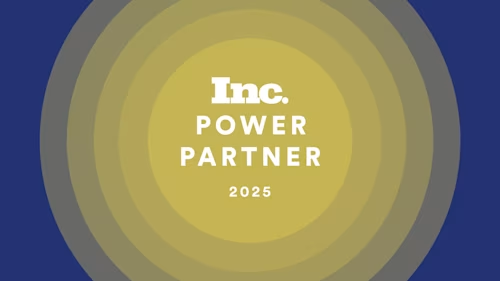
Best Practices for Contract Management System Integrations
Sales, HR, legal and procurement pros feel that existing software isn't being used to full capacity, and the top reason is lack of integration with other tools.

Organizations of all sizes employ multiple software solutions to run their business and manage employee, customer and vendor relationships. And while the relationships and software may vary across departments, the one thing they all have in common is the role contracts play.
Contracts are at the heart of nearly every relationship, and multiple departments are involved in most contract processes. However, the systems each of those departments uses aren’t often connected to one another. For example, an HR offer letter initiates in HR (HCM), and before it can be sent, finance might have to approve it (ERP). And once signed, IT must provision the new employee (ServiceNow).
In a Docusign survey of sales, HR, legal and procurement professionals, over 90% of these teams felt that their existing software wasn’t being used to full capacity, and the top reason is due to lack of integration with other tools and systems. Some departments even manage their contracts manually, storing agreements in filing cabinets, emails or shared drives.
These legacy and manual methods expose companies to unnecessary headaches, including:
Inefficiency: Not only is a manual, siloed process a bad experience for customers, partners and employees, it can result in lost revenue and decreased productivity
Information silos: Limiting contract knowledge to individual departments causes inefficiencies, slows the pace of business, limits your ability to glean more meaningful insights from your agreements and prevents you from connecting them to your other systems
Increased risk: Without a secure, connected way to store and interact with your agreements, you’re exposed to potential noncompliance issues and putting valuable resources at risk

The obvious answer to this problem? Integration. But there’s a wrong way and a right way to go about it. Merely attaching one system to another may solve some connectivity issues, but it doesn’t create interoperability.
Usable integrations enable flexibility, so systems can work and evolve together. That’s why Docusign takes a different approach, looking beyond connectivity to providing flexibility. Our Connections Framework acknowledges that all our products are more valuable when connected to the other systems your organization uses.
How not to approach integrations
Many companies, including CLM and e-signature providers, offer simple integrations into third-party systems with no thought to making them interoperable. An integration that welds two systems together but provides no flexibility doesn’t really address inefficient processes, siloed information and unnecessary risk.
That’s why we recommend avoiding these approaches:
Highly customized integrations typically require a hefty investment in time and resources and attempt to solve for every possible scenario. The result is a timeline and budget that become unwieldy and a solution that’s extremely difficult to use and nearly impossible to maintain.
Using an integration to address a product gap in other systems will always yield suboptimal results. This approach merely provides a stop gap rather than creating a connection between two systems, each one designed to manage a particular activity or process.
Proprietary solutions built by internal teams without thought to extensibility are hard to scale and maintain as the third-party system evolves. They also underestimate the value of using an integration designed by the provider themselves.
Best practices for contract management system integrations
The best approach is to deploy integrations that minimize headaches and are cost effective and efficient to implement. Docusign developed the Docusign Connections Framework, which includes connections to some of the most common enterprise software solutions, because we believe our products are more valuable when connected to other systems your organization uses.
The Docusign Connections Framework is:
Simple to use and maintain: With just a few clicks—and no code setup—users can easily establish connections with third-party systems, and then they can view and manage those connections in one place for easy, ongoing maintenance. We also offer a fast, easy way to get started with connections, which are often the most complicated and time-consuming aspect of integration setup.
User-friendly for non-techies: Nontechnical users can:
Create workflow steps that automatically orchestrate the exchange of information across systems, saving time and avoiding the manual errors associated with entering information in multiple systems.
Define the relationship between Docusign CLM and third-party systems using a guided data mapping UI, no custom code necessary.
Establish a secure connection with a third-party system via a self-guided process that allows them to enter their credentials for that system directly within CLM without the typical authentication hassles associated with integrations.
Extensible: All our integrations are designed on the same framework, so users will have the same user experience regardless of the connection they’re making. Not only does this deliver a faster-time-to-value at setup, it’s also easier to maintain over time.
A guided approach to workflows
The Docusign Connection Framework is powered by workflow steps. Workflows, in general, are an important part of contract management and allow users to automatically route agreements to the right reviewers or signers at the right time.
For integrations, workflow steps automate and govern how information is shared across systems. These types of automated data flows are prevalent in many software integrations. However, many of today’s CLM vendors deliver a flawed approach to workflows. Two common pitfalls include workflows that prioritize configurability over best practices and over-automation resulting in technical debt.
Docusign’s approach to workflows is designed to avoid those pitfalls and deliver a guided experience. Docusign CLM customers have access to hundreds of pre-configured templates. At the same time, we believe workflows shouldn’t be unlimited, so we provide standardizations that help protect against over automation, while still enabling a wide variety of use cases.
Like our Connection Framework, nontechnical users can also participate in workflow creation using the Docusign CLM workflow canvas, which offers many benefits:
Preconfigured workflow templates: These templates cover hundreds of use cases and reduce the complexity of using and designing workflows. They also ensure you have structured, logical workflows that follow best practices.
Standardization: In addition to the templates, the workflow canvas has 120+ prebuilt, drag-and-drop steps that enable a variety of use cases while preventing the over automation associated with limitless workflows. If a step isn’t available, it’s because that action isn’t recommended.
Flexibility: As your business needs evolve and operations or systems change, users can easily design new workflows or reconfigure existing ones to meet the new requirements.
Learn More
The Docusign Connections Framework is simple to use, maintain and extend. The Connections page, which is the interface to the Connections Framework in Docusign CLM, allows even nontechnical users to establish a secure connection with third-party systems without typical hassles. That same ease of use also extends to sharing information across systems with our preconfigured workflow templates and workflow canvas. And because all Docusign integrations are built on the same framework, you can manage all your connections in one place and use the workflow steps you’ve built across systems, saving you time.
Learn more about the Connections Framework and integrations with SAP Ariba, Workday and NetSuite.
Contact sales to learn more.
Austin Miller is a director of product marketing at Docusign.
Related posts
Docusign IAM is the agreement platform your business needs




